

Qatar National Library by OMA: A Symbol of National Identity

Qatar National Library (QNL) building was designed and built by architect Rem Koolhaas and his subsidiary Office for Metropolitan Architecture (OMA). The library is located in Doha , Qatar. It is in an ideal location for students, as it is located in the Education City, which is an academic campus. Qatar National Library which was officially opened in April 2018, houses the national library with old Arabic manuscripts, the public library with space for children, and the academic library that supports research. The library houses the national library with old Arabic manuscripts and more than a million books, a public library with an area for children, and an academic library that supports research. The purpose of establishing the Qatar National Library is to produce an information center in Qatar, thus encouraging people to book culture and reading habits and to eliminate the lack of a central library.

The building attracts attention primarily with its interesting shape. The building looks like two papers “that are pulled apart and folded diagonally at the corners to create a shell-like container, which encloses the open-plan interior ” (QNL 2018). However, for those who follow Rem Koolhaas’s work, this should not be unusual, because OMA’s previous works also have such different shapes.

When you enter the library, you find yourself directly in the center and a wide area of 45,000 square meters welcomes you. Instead of a multi-storey building with an almost labyrinthine mess, a whole space is designed in spaciousness. The entire library consists of a monolithic space rather than partitioned spaces and this space encirclements you with books. Contains over a million books, periodicals, and other items. The bookshelves are in a stepped area and have the appearance of an amphitheater. “We designed the space so you can see all the books in a panorama,” said OMA co-founder Rem Koolhaas. The zig-zag ramps are designed to allow access, as the terraces where the books are located create a slope with their rising levels.

In order to connect the main corridors of the library, there is a 25-meter wide bridge that works like a mezzanine floor. While on the bridge, you can use the media and study rooms, exhibition displays, a circular conference table, reading desks, and see the heritage library, central space, and auditorium. The auditorium, located in the part of the building that rests on the ground, is located at the end of the bridge and merges with the bridge. The heritage library, on the other hand, is 6 meters deep at the negative elevation, as if there was an archaeological excavation. The Heritage Library can be observed from the ground floor. ‘’ The heart of Qatar National Library, the Heritage Library, is a unique contribution to Qatar’s cultural landscape. Its growing collection includes rare and valuable archival documents, books, and periodicals in various European languages; early Arabic printed materials, such as books, journals, magazines, and newspapers; and Arabic manuscripts, maps, atlases, globes, historical photographs, and instruments and tools related to travel.’’ (QNL)

Ancillary functions such as offices, computer labs, instruction rooms, study rooms, warehouse, children’s library, and personnel areas are also included. A look at the innovative technologies integrated into the building reveals automated self-check and return stations and a Radio Frequency Identification (RFI) book sorting system. It is available in computer systems, tablets, interactive screens, and audio-visual equipment for visitors to spend quality time, book returns, or students’ research.

When looking at the exterior of the Qatar National Library, the corrugated glass facade is the first thing that attracts attention. OMA also preferred this type of glass in the Casa da Musica in Porto and Taipei Performing Arts Center. For the Qatar National Library with its lozenge-shaped façades, this corrugated glass was chosen for climatic reasons, as this type of glass can keep the heat out during the extremely hot days of the desert. In addition, since aluminum is used as the ceiling material, the light reflected from the corrugated glass creates a bright environment inside. Looking at the materials used other than aluminum, marble, a traditional material, was used in the part of the heritage library. On the floor, a color change was made and white marble was chosen instead of beige. While travertine is preferred on the terrace, stainless steel, one of the contemporary materials , is used in the building from time to time.

‘’Libraries are important knowledge hubs of knowledge-based societies because they are the traditional institutions of knowledge management. Besides print publications, libraries need to provide sufficient digital material and attractive physical infrastructure for their users ’’ (Mainka et al., 2013). The Qatar National Library, designed by OMA’s co-founder Rem Koolhaas, is a unique cultural building , with its striking shape, unusual library interior planning, and bringing together the past and the future through materials.
References:
- QNL,(2018). The Building. Doha, QA: Qatar National Library.
- QNL. About the Library/ Our Building. [online]. Available at: https://www.qnl.qa/en/about/the-library-building [Accessed 28 January 2022].
- Mainka, A., Hartmann, S., Orszullok, L., Peters, I., Stallmann, A., and Stock, W. G. (2013). Public libraries in the knowledge society: Core services of libraries in informational world cities . Libri, 63 (4), 295-319

It is a great passion for Elif Demirci, a student of the department of architecture, to examine all the works, materials and projects going on in the field of architecture. She believes that her writings will improve the built environment.

10 Online courses for software skills in architecture

Steps to get your architecture projects published
Related posts.

Taj-Ul Masajid, Bhopal

La Mamounia Marrakech, Morocco

Nokha Community Center by Sanjay Puri

Project in-depth: Kurilpa Bridge

Bouillon Nature Retreat by Architecture Brio

Galta Ji Temple, Jaipur
- Architectural Community
- Architectural Facts
- RTF Architectural Reviews
- Architectural styles
- City and Architecture
- Fun & Architecture
- History of Architecture
- Design Studio Portfolios
- Designing for typologies
- RTF Design Inspiration
- Architecture News
- Career Advice
- Case Studies
- Construction & Materials
- Covid and Architecture
- Interior Design
- Know Your Architects
- Landscape Architecture
- Materials & Construction
- Product Design
- RTF Fresh Perspectives
- Sustainable Architecture
- Top Architects
- Travel and Architecture
- Rethinking The Future Awards 2022
- RTF Awards 2021 | Results
- GADA 2021 | Results
- RTF Awards 2020 | Results
- ACD Awards 2020 | Results
- GADA 2019 | Results
- ACD Awards 2018 | Results
- GADA 2018 | Results
- RTF Awards 2017 | Results
- RTF Sustainability Awards 2017 | Results
- RTF Sustainability Awards 2016 | Results
- RTF Sustainability Awards 2015 | Results
- RTF Awards 2014 | Results
- RTF Architectural Visualization Competition 2020 – Results
- Architectural Photography Competition 2020 – Results
- Designer’s Days of Quarantine Contest – Results
- Urban Sketching Competition May 2020 – Results
- RTF Essay Writing Competition April 2020 – Results
- Architectural Photography Competition 2019 – Finalists
- The Ultimate Thesis Guide
- Introduction to Landscape Architecture
- Perfect Guide to Architecting Your Career
- How to Design Architecture Portfolio
- How to Design Streets
- Introduction to Urban Design
- Introduction to Product Design
- Complete Guide to Dissertation Writing
- Introduction to Skyscraper Design
- Educational
- Hospitality
- Institutional
- Office Buildings
- Public Building
- Residential
- Sports & Recreation
- Temporary Structure
- Commercial Interior Design
- Corporate Interior Design
- Healthcare Interior Design
- Hospitality Interior Design
- Residential Interior Design
- Sustainability
- Transportation
- Urban Design
- Host your Course with RTF
- Architectural Writing Training Programme | WFH
- Editorial Internship | In-office
- Graphic Design Internship
- Research Internship | WFH
- Research Internship | New Delhi
- RTF | About RTF
- Submit Your Story
Looking for Job/ Internship?
Rtf will connect you with right design studios.

- Random Project
- Collaborate
Qatar National Library
Introduction.
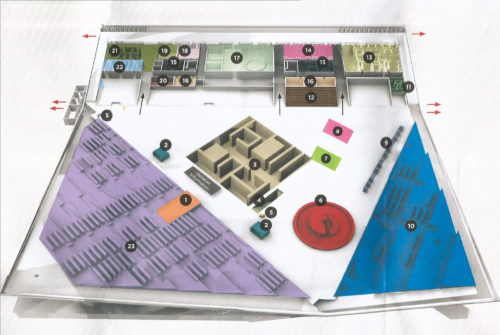
- Library – 25,900m²
- Office – 3,000m²
- Exhibition – 1,500m²
- Restaurant/Bar – 600m²
- Total – 31,000m²
The Heritage Library
- Climate-controlled display cases in the Heritage Library and throughout the building to showcase the collection.
- The dedicated Conservation and Preservation Laboratory that actively works to restore and protect items in the Heritage Library.
- The Digitization Laboratory, which digitizes items from the Library and other collections and makes them available to scholars worldwide.
The 21 st century Library
- Automated self-checkout and return stations, and a radio frequency identification (RFID) book sorter system, allow for convenient access to the Library’s materials.
- A people mover system transports library users around the perimeter of the building and throughout the shelving tiers, making the collection easily accessible for all visitors.
- A wide range of computer systems, tablets, interactive screens and audiovisual equipment throughout the building.
The Community Space
- Assistive technology room including 16 computer stations with adjustable leveling, equipped with cutting-edge hardware and software technologies
- A dedicated area for young adults.
- A 686-square-meter Children’s Library.
- 4-room Innovation Station.
- 2 instruction rooms.
- A computer lab.
- 8 group study rooms.
- 28 individual study carrels.
- 3 media viewing rooms.
- 26 large interactive screens and 465 computers.
- A 200-seat Special Events Area with lights, an LED screen, speakers and noise-dampening curtains.
- A 120-seat auditorium.
- A restaurant and a café.
Corrugated glass
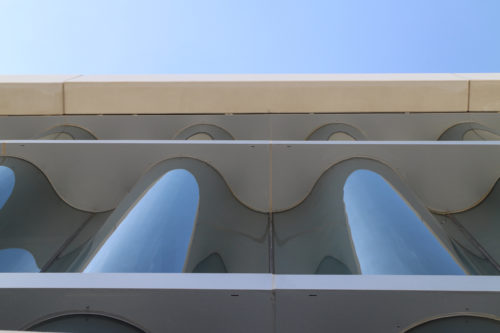
by WikiArquitectura (December 2018)

Did you find this article useful?
Really sorry to hear that...
Help us improve. How can we make this article better?
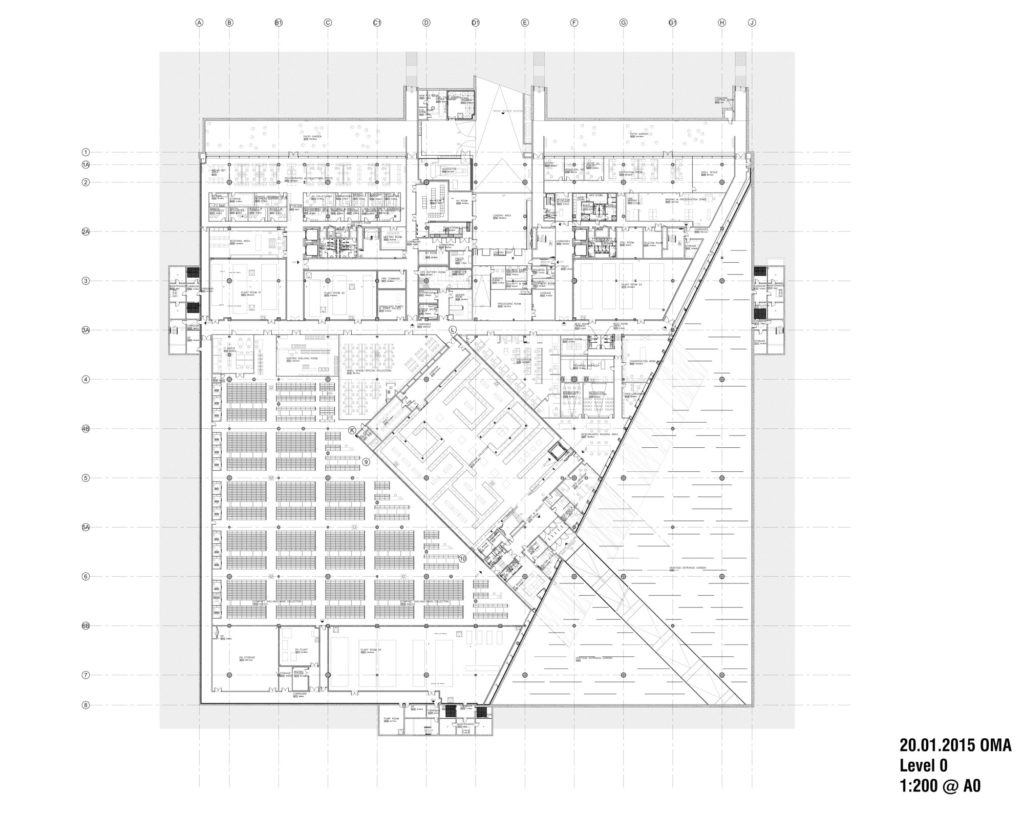
Publications
- Conferences & Events
- Professional Learning
- Science Standards
- Awards & Competitions
- Daily Do Lesson Plans
- Free Resources
- American Rescue Plan
- For Preservice Teachers
- NCCSTS Case Collection
- Partner Jobs in Education
- Interactive eBooks+
- Digital Catalog
- Regional Product Representatives
- e-Newsletters
- Bestselling Books
- Latest Books
- Popular Book Series
- Prospective Authors
- Web Seminars
- Exhibits & Sponsorship
- Conference Reviewers
- National Conference • Denver 24
- Leaders Institute 2024
- National Conference • New Orleans 24
- Submit a Proposal
- Latest Resources
- Professional Learning Units & Courses
- For Districts
- Online Course Providers
- Schools & Districts
- College Professors & Students
- The Standards
- Teachers and Admin
- eCYBERMISSION
- Toshiba/NSTA ExploraVision
- Junior Science & Humanities Symposium
- Teaching Awards
- Climate Change
- Earth & Space Science
- New Science Teachers
- Early Childhood
- Middle School
- High School
- Postsecondary
- Informal Education
- Journal Articles
- Lesson Plans
- e-newsletters
- Science & Children
- Science Scope
- The Science Teacher
- Journal of College Sci. Teaching
- Connected Science Learning
- NSTA Reports
- Next-Gen Navigator
- Science Update
- Teacher Tip Tuesday
- Trans. Sci. Learning
MyNSTA Community
- My Collections
NCCSTS Case Collection • Teaching Resources
The publications listed below have been produced by the National Center for Case Study Teaching in Science.
Start with a Story: The Case Study Method of Teaching College Science , edited by Clyde Freeman Herreid, originally published in 2006 by NSTA Press; reprinted by the National Center for Case Study Teaching in Science (NCCSTS) in 2013. Collection of 40+ essays examining every aspect of the case study method and its use in the science classroom. The book is available for purchase through NSTA .
Science Stories You Can Count On: 51 Case Studies with Quantitative Reasoning in Biology , edited by Clyde Freeman Herreid, Nancy A. Schiller, and Ky F. Herreid, NSTA Press, 2014. Includes case studies as well as tips and techniques for promoting quantitative reasoning in biology. The book is available for purchase through NSTA or from Amazon .
Science Stories: Using Case Studies to Teach Critical Thinking , edited by Clyde Freeman Herreid, Nancy A. Schiller, and Ky F. Herreid, NSTA Press, 2012. A compilation of case studies with questions and teaching notes that can be used to help develop STEM students’ critical thinking skills. The book is available for purchase through NSTA or from Amazon .
The NCCSTS has produced two training videos with supporting brochures on the case method and its use in science education.
Use of Case Studies and Group Discussion in Science Education This hands-on video shows the classical method of running a case study class used by Harvard law and business school professors for almost 100 years—the art of using successful group discussion. In 26 minutes you will learn how to ensure that your large group discussion is not a free-for-all or an exercise in futility as you try to get students to say something intelligent. Preparation and control are the key ingredients. For preparation students must read a case study ahead of time. But it is more than that. In this video, which focuses on a case study involving genetically modified food, you will see how an actual class is given a “warm-up” by breaking into small groups to discuss the reading they’ve done ahead of time. Then you will see how a large group discussion is successfully controlled. It’s the important, yet subtle, use of appropriate questions, body language, blackboard planning, and summarization that makes it all work. Video on YouTube | Access the video booklet (PDF)
Team Learning: Cooperative Learning in the Science Classroom Having students work in small groups is arguably the best way to teach science and this includes teaching science using cases. But how can we run a classroom this way? Here is one answer using a method called Team Learning. This 26-minute video shows you how to establish groups, how to set up a grading system that encourages group participation, how to answer students’ questions and, most importantly, why this is a superior method of teaching. Video on YouTube | Access the video booklet (PDF)
Bibliographies
- Bibliography on Case Study Teaching in Science compiled by Nancy A. Schiller and Clyde Freeman Herreid.
Selected Articles by Clyde F. Herreid and other members of the NCCSTS
Getting started.
- Case Studies in Science: A Novel Method of Science Education
- What is a Case? Bringing to Science Education the Established Teaching Tool of Law and Medicine
- My Favorite Case and What Makes It So
- What Makes a Good Case? Some Basic Rules of Good Storytelling Help Teachers Generate Student Excitement in the Classroom
- Sorting Potatoes for Miss Bonner: Bringing Order to Case Study Methodology Through a Classification Scheme
- Can Case Studies Be Used to Teach Critical Thinking?
- A Peek Behind the Curtain of Tenure and Promotion
Writing Cases
- Cooking With Betty Crocker: A Recipe for Case Writing
- The Way of Flesch: The Art of Writing Readable Cases
- Twixt Fact and Fiction: A Case Writer’s Dilemma
- Let’s Get Personal: Putting Personality into your Cases
- Puttin’ on the Ritz: How to Put Science into Cases
- Putting Words in Their Mouth: Writing Dialogue for Case Studies
- And All That Jazz: An Essay Extolling the Virtues of Writing Case Teaching Notes
- Exercises in Style: Is There a Best Way to Write a Case Study?
- The Chef Returns: A Recipe for Writing Great Case Studies
- Creating a Video Case Study
Teaching with Cases
- Don't! What Not to Do When Teaching Cases
- Return to Mars: How Not to Teach a Case Study
- Assembling a Case Study Tool Kit: 10 Tools for Teaching With Cases
- The Interrupted Case Method
- Case Studies and the Flipped Classroom
- A Chat with the Survey Monkey: Case Studies and the Flipped Classroom
- Intimate Debate Technique
- "Clicker" Cases: Introducing Case Study Teaching into Large Classrooms
- Structured Controversy: A Case Study Strategy
- Trigger Cases Versus Capstone Cases
- The Boy Scouts Said Its Best: Some Advice on Case Study Teaching and Student Prepara-tion
- Naming Names
- Science, Pseudoscience, and Nonsense
Cases and Cooperative Learning
- The Bee and the Groundhog: Lessons in Cooperative Learning
- I Never Knew Joe Paterno: An Essay on Teamwork and Love
- The Wisdom of Groups
Grading Case Work
- When Justice Peeks: Evaluating Students in Case Study Teaching
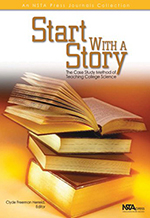
Start with a Story: The Case Study Method of Teaching College Science
Edited by Clyde Freeman Herreid
Originally published in 2006 by NSTA Press; reprinted by the National Center for Case Study Teaching in Science (NCCSTS) in 2013. Collection of 40+ essays examining every aspect of the case study method and its use in the science classroom. The book is available for purchase through NSTA .
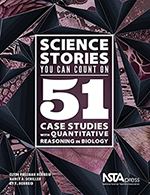
Science Stories You Can Count On: 51 Case Studies with Quantitative Reasoning in Biology
Edited by Clyde Freeman Herreid, Nancy A. Schiller, and Ky F. Herreid, NSTA Press, 2014.
Includes case studies as well as tips and techniques for promoting quantitative reasoning in biology. The book is available for purchase through NSTA or from Amazon .
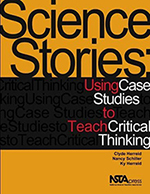
Science Stories: Using Case Studies to Teach Critical Thinking
Edited by Clyde Freeman Herreid, Nancy A. Schiller, and Ky F. Herreid, NSTA Press, 2012.
A compilation of case studies with questions and teaching notes that can be used to help develop STEM students’ critical thinking skills. The book is available for purchase through NSTA or from Amazon .
Use of Case Studies and Group Discussion in Science Education
This hands-on video shows the classical method of running a case study class used by Harvard law and business school professors for almost 100 years—the art of using successful group discussion. In 26 minutes you will learn how to ensure that your large group discussion is not a free-for-all or an exercise in futility as you try to get students to say something intelligent. Preparation and control are the key ingredients. For preparation students must read a case study ahead of time. But it is more than that. In this video, which focuses on a case study involving genetically modified food, you will see how an actual class is given a “warm-up” by breaking into small groups to discuss the reading they’ve done ahead of time. Then you will see how a large group discussion is successfully controlled. It’s the important, yet subtle, use of appropriate questions, body language, blackboard planning, and summarization that makes it all work.
Video on YouTube | Access the video booklet (PDF)
Team Learning: Cooperative Learning in the Science Classroom
Having students work in small groups is arguably the best way to teach science and this includes teaching science using cases. But how can we run a classroom this way? Here is one answer using a method called Team Learning. This 26-minute video shows you how to establish groups, how to set up a grading system that encourages group participation, how to answer students’ questions and, most importantly, why this is a superior method of teaching.
The articles listed below are selected by Clyde F. Herreid and other members of the NCCSTS.
An official website of the United States government
Here’s how you know
Official websites use .gov A .gov website belongs to an official government organization in the United States.
Secure .gov websites use HTTPS A lock ( Lock A locked padlock ) or https:// means you’ve safely connected to the .gov website. Share sensitive information only on official, secure websites.

Accelerating Biomedical Discovery and Data-Powered Health
Citations for biomedical literature
MedlinePlus
Reliable, up-to-date health information for you
An experimental multimedia search engine
Medical Subject Headings
ClinicalTrials.gov
A database of clinical studies, worldwide
Basic Local Alignment Search Tool
News and Highlights

Musings from the Mezzanine

Circulating Now

NCBI Insights

NLM Announcements

Technical Bulletin

NIH Virtual Tour: National Library of Medicine
The National Library of Medicine (NLM) is the world's largest biomedical library and a national resource for health professionals, scientists, and the public.
News Spotlight
2024 nlm/mla joseph leiter lecture.

Responsible AI in Healthcare: A Practical Approach
Artificial intelligence (AI) has the potential to transform healthcare and improve health outcomes, but it also poses ethical, legal, and social challenges. Dr. Maia Hightower, founder of Equality AI and former EVP, Chief Digital Transformation Officer at University of Chicago Medicine, will discuss some of the principles and practices of responsible AI in healthcare, drawing on her experience as a CEO and a physician. Dr. Hightower will share some examples of how AI can be used to enhance patient care, clinical decision making, and health equity, as well as some of the risks and pitfalls to avoid. She will also offer some recommendations on how to foster a culture of trust, transparency, and accountability in the development and deployment of AI in healthcare.
For more information go to https://www.mlanet.org/p/cm/ld/fid=250
Research at NLM
Nlm intramural research program.
Intramural research at NLM consists of the development and application of computational approaches to a broad range of problems in biomedicine, molecular biology, and health. READ RESEARCH HIGHLIGHTS | MEET OUR PRINCIPAL INVESTIGATORS | EXPLORE TRAINING OPPORTUNITIES
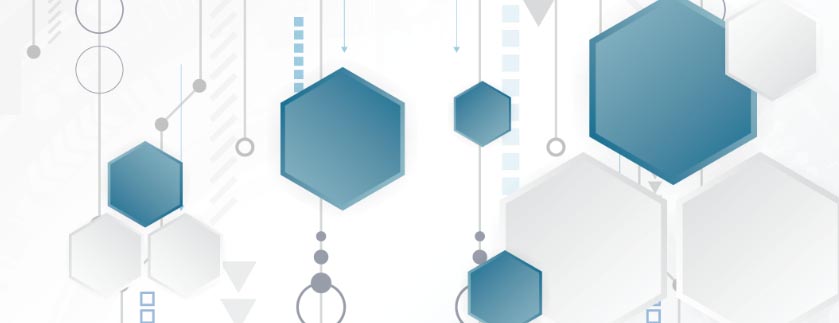
Historical Collections at NLM
Biomedical and clinical informatics at nlm, health it and health data standards.

Efficient health care information exchange in the US and worldwide is made possible by NLM’s work with IT Data Standards.
Learn about NLM’s contributions to Health IT
Unified Medical Language System (UMLS) Terminology Services
This set of tooling services brings together many health and biomedical vocabularies and standards to enable interoperability between computer systems.
Explore UMLS
Biomedical Informatics Training Program
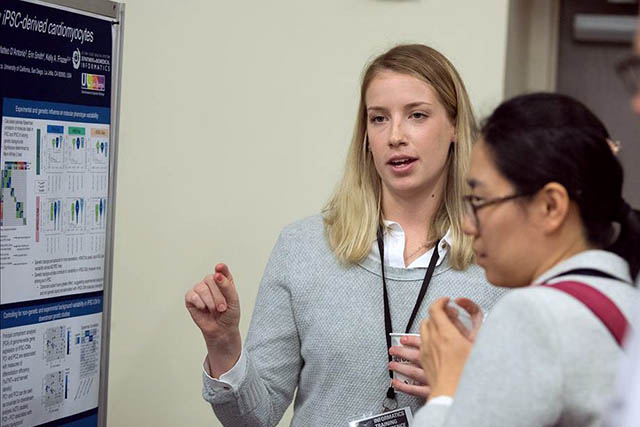
This training program provides biomedical and clinical informatics training and research opportunities for individuals at various stages in their career.
Investigate training opportunities

The Library started as a shelf of books in the Surgeon General’s office in 1836 but has grown to a collection of millions of print and electronic resources.
Explore our past
Organization
The diverse centers, divisions, advisory bodies and other organizational units that make up NLM contribute in myriad ways to the Library’s mission.
Explore the Library
Strategic Plan
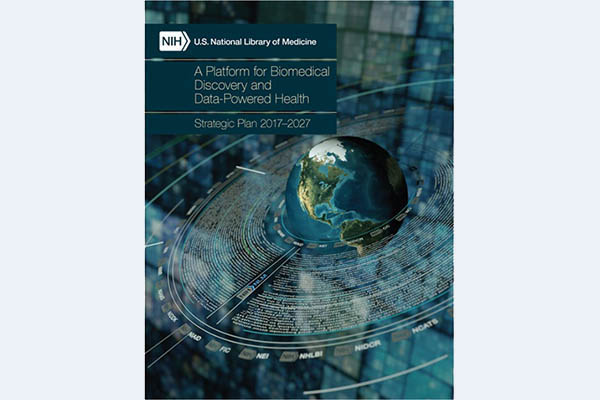
This ten year plan outlines NLM's role in a future where data and information transform and accelerate biomedical discovery and improve health and health care.
VIEW OUR STRATEGIC PLAN
An official website of the United States government
The .gov means it’s official. Federal government websites often end in .gov or .mil. Before sharing sensitive information, make sure you’re on a federal government site.
The site is secure. The https:// ensures that you are connecting to the official website and that any information you provide is encrypted and transmitted securely.
- Publications
- Account settings
Preview improvements coming to the PMC website in October 2024. Learn More or Try it out now .
- Advanced Search
- Journal List
- J Med Libr Assoc
- v.109(3); 2021 Jul 1
Practical considerations for a library's research data management services: the case of the National Institutes of Health Library
Soojung kim.
1 rk.ca.unbj@gnujoosmik , Department of Library and Information Science, Jeonbuk National University, Jeonju, South Korea
Sue Yeon Syn
2 ude.auc@nys , Department of Library and Information Science, The Catholic University of America, Washington, DC
Associated Data
Interview codes are available in the appendix. Full transcripts cannot be shared due to participant confidentiality concerns.
This study investigates research data management (RDM) services using a crosstab framework with the National Institutes of Health (NIH) Library as a case study to provide practical considerations for libraries seeking to improve their RDM services.
We conducted semistructured interviews with four librarians who provide data services at the NIH Library regarding library user characteristics, RDM services provided, RDM infrastructure, and collaboration experiences. Through the analysis of interview transcripts, we identified and analyzed the NIH Library's RDM services according to Online Computer Library Center (OCLC)'s three categories of RDM services and the six stages of the data lifecycle.
The findings show that the two models' crosstab framework can provide an overview of an institution's current RDM services and identify service gaps. The NIH Library tends to take more responsibility in providing education and expertise services while relying more on information technology departments for curation services. The library provides significant support for data creation, analysis, and sharing stages to meet biomedical researchers' needs, suggesting areas for potential expansion of RDM services in the less supported stages of data description, storage, and preservation. Based on these findings, we recommend three key considerations for libraries: identify gaps in current services, identify services that can be supported via partnerships, and get regular feedback from users.
Conclusion:
These findings provide a deeper understanding of RDM support on the basis of RDM service categories and the data lifecycle and promote discussion of issues to be considered for future improvements in RDM services.
INTRODUCTION
In recent decades, the increasing volume of data-driven research and changing funding agency policies for research data management (RDM) have posed significant challenges for researchers who are not well versed in RDM practices and sharing [ 1 , 2 ]. In response, many libraries have expanded their services to address researchers' growing demand for RDM support.
Several earlier studies discuss the RDM roles of libraries and library services [ 3 – 5 ]. The demand for RDM services has been strong, particularly in the health sector [ 6 ]. Accordingly, health science libraries have developed a wide range of RDM services: instruction and consultation for data management plans (DMPs) [ 7 ]; training on data analysis tools and online bioinformatics application guides [ 8 ]; qualitative data analysis, data visualization, and data wrangling [ 9 ]; training on clinical data management [ 9 , 10 ]; developing data dictionaries and standardized data request forms [ 11 ]; and file management, assigning metadata to data, naming variables, and finding an appropriate data repository [ 12 ]. A recurring theme characterizing RDM services is collaboration among stakeholders. Meeting the various needs that arise throughout the data lifecycle cannot be assigned to a single unit within an institution. Collaborations and partnerships among libraries, information technology (IT) departments, and other internal or external units are key to the development and success of RDM services [ 11 – 14 ].
This study investigates RDM services using the National Institutes of Health (NIH) Library as a case study and provides practical considerations for libraries seeking to extend their RDM services. The NIH's RDM services were analyzed based on Online Computer Library Center (OCLC)'s RDM service categories [ 15 ] and the data lifecycle. In the RDM process, data pass through a series of stages, from creation to preservation and reuse. Given that “the concept of the research data lifecycle plays a central role in organizing and structuring services” [ 16 ], analyzing RDM services at each stage of the data lifecycle to identify areas to introduce new services can be useful. Because NIH is one of the world's leading medical centers, it was selected to examine RDM services relating to a wide range of data management scenarios in biomedical research. The NIH Library serves career-level researchers and related staff [ 17 ], but their RDM services apply to many academic libraries whose faculty and students are considered professional and future researchers who manage data. This study's findings can be useful for specialized and research libraries that serve researchers, particularly in biomedical fields, that aim to develop or improve their RDM support services.
The NIH Library serves the NIH Intramural Research Program, the largest biomedical research institution globally, numbering approximately 1,200 principal investigators, 4,000 postdoctoral fellows, and many other employees. The NIH Library also serves other institutions in the US Department of Health and Human Services [ 18 ].
The NIH Library created a data services team in 2013 [ 18 ]. In addition to a team leader, two other librarians help implement the team's operational and strategic objectives. Data services librarians work closely with the bibliometrics team of two librarians, which provides bibliometrics services and is actively involved in data services training. Another team related to data services is the editing team, which strategizes with researchers to select target journals for their manuscripts and assists them with creating and formatting datasets for inclusion in publications.
The library has a matrix structure that maintains essential library functions and organizational structures, although cross-functional groups perform much of the work. The data services team, bibliometrics team, editing team, and other units are the library's structural units, but library services or projects can be implemented collaboratively by librarians in multiple units, which allows for flexibility in utilizing librarians' knowledge and enables library resources to be used most effectively.
Conceptual framework
To develop a systematic approach to characterizing the types of RDM services available at NIH, we borrow from two different models: OCLC's RDM services categories and the data lifecycle model. The OCLC's RDM service categories were identified by characterizing RDM service components in a review of more than a dozen research libraries in North America, Europe, and Australia, with the goal of “provid[ing] a useful heuristic for visualizing the scope of the RDM service space” [ 15 ]. The categories include (1) education services that aim to raise awareness of RDM's importance, instruct researchers in basic RDM skills, and introduce RDM tools and resources; (2) expertise services that offer decision support and customized solutions for RDM problems encountered by researchers; and (3) curation services that provide the technical infrastructure and related services that support RDM throughout the research process.
Additionally, we used the data lifecycle stages to determine which specific RDM services provide support for particular stages. From four data lifecycle models (DataONE Life Cycle [ 19 ], UK Data Service Research Data Lifecycle [ 20 ], Digital Curation Centre Curation Lifecycle Model [ 21 ], and United States Geological Survey Data Lifecycle [ 22 ]), we identified six stages: (1) creation, (2) description, (3) storage, (4) analysis, (5) sharing, and (6) preservation. In the creation stage, researchers generate original data or collect preexisting data from other sources. In the description stage, researchers create appropriate metadata or describe data to support storage and retrieval with the self-generated or collected data in hand. In the storage stage, data are stored appropriately in certain formats. In the analysis stage, data are analyzed to produce results. In the sharing stage, researchers publish data through journals, place them in institutional or public repositories to share with other researchers, or both. In the preservation stage, data are managed for long-term preservation. These six stages of the data lifecycle, together with OCLC's RDM services categories, provide a useful framework for identifying the current coverage and gaps in RDM services provided by the NIH. Figure 1 illustrates the conceptual framework used in this study for RDM services assessment.

Conceptual framework of the study
Data collection and analysis
We collected data through semistructured interviews with four librarians, two data services librarians, and two bibliometrics librarians in November 2018 following Institutional Review Board approval from the Catholic University of America. Interview questions asked about library user characteristics, the existing infrastructure of RDM at the library and NIH, the types of RDM services provided at each stage of the data lifecycle, difficulties experienced in providing RDM services, and collaborative experiences ( Appendix 1 ). Interviews were recorded and transcribed for analysis, and the transcripts' coding was aligned with the categories of the interview questions. Predetermined categories derived from OCLC's RDM service categories and the data lifecycle guided the coding process in identifying the types of RDM service offered by the NIH. Under the interview question categories, detailed codes were added to the code categories as they emerged. The two authors coded each transcript individually, compared coding results, and discussed them to resolve discrepancies. The final version of the codes used in the analysis is available in Appendix 2 .
Because users' feedback was brought up multiple times during the interviews, the librarians gave us the aggregated results of feedback surveys collected in 2018. We used these data to better explain and interpret the interview content. Surveys were distributed to 372 trainees in selected training classes in 2018 and received 246 responses concerning participants' satisfaction level, expectations for the training classes, and interests in future training sessions.
Institutional environment
The NIH Library serves multiple campuses. Also, because NIH comprises twenty-seven separate institutes and centers [ 23 ], each of which has its own IT infrastructure, these institutes and centers also handle curation services (data management and servers). This leads to some educational services not being able to be provided to all members of the NIH, although the library's primary RDM services include training classes (see Educational Services section). The NIH's IT department, the Center for Information Technology (CIT), provides integrated services for backup and preservation (see Curation Services section).
The NIH Strategic Plan for Data Science manifests another aspect of the institutional environment that shapes the NIH Library's services. In 2018, the NIH released its first Strategic Plan for Data Science to reinforce the mission of “storing, managing, standardizing and publishing the vast amounts of data produced by biomedical research” [ 24 ]. The NIH Library aligns itself closely with the plan, as shown in the data services team leader's remark, “Our goal now is to support the NIH strategic plan.” Because “one of the major pillars of the new Strategic Plan for Data Science is FAIR (Findable, Accessible, Interoperable, and Reusable) Principles” and the data generated in NIH have high potential to be shared with the public, it is essential to teach NIH researchers how to make data usable by others. To do this, librarians promote the use of common data elements (CDEs), which are elements that are common to multiple datasets across different clinical studies [ 25 ]. By specifying standardized vocabularies, definitions, and value sets for data, CDEs facilitate the comparison and combination of data from different studies. The NIH provides an extensive repository of CDE collections [ 26 ], which librarians encourage researchers to use.
User characteristics and needs
According to training participants' feedback survey, 39% (N=25 of 64 respondents from June to December) were fellows and trainees working with actual data. Other participants included intramural researchers (17%, N=15), scientific administrators/analysts (11%, N=11), and clinical staff (4.7%, N=3), among others. A possible explanation for the high participation of fellows is that they may not remain at the institute for extended periods, so continuous training may be necessary for newly arriving fellows. Librarians also observed that fellows are more proactive in acquiring new skills that “they can apply during their future careers.”
One interesting and unusual aspect of the NIH Library is that researchers are not required to apply for research funding. Because the library serves only intramural researchers who do not need DMP support, the library does not offer training on writing DMPs, even though this is an essential component of RDM services in many libraries [ 27 ]. As one librarian put it, “Since we don't do data management plans, here we look for opportunities where we can talk about best practices … In all of our classes we talk about this best practice for scientific computing, and it's related to storage, data curation, managing data.”
Collaboration experiences
At the NIH Library, collaboration operates at multiple levels and may involve other library units, other NIH units, or external partners. The NIH Library's matrix structure brings together librarians with diverse skillsets and expertise to work on specific projects. Thus, when the data services team leader announces a new project and puts out a call for support, other librarians may volunteer to join the project team on a provisional basis. Furthermore, librarians “work collaboratively with everybody who does data science at NIH to partner on training.” This interorganizational collaboration enables more efficient use of resources and expertise. For example, the library provides basic statistics training (e.g., Overview of Common Statistical Tests) but has thus far not supported advanced statistics techniques. Since the creation of a chief statistician position in the biostatistics division at the NIH Clinical Center, this person has been able to teach advanced statistics classes for the library.
What is vital in such collaboration is communication. The NIH formed the Training Collaborative Forum, which consists of representatives of various training units within the NIH who administer mandatory training (e.g., Health Insurance Portability and Accountability Act), technical training (e.g., Excel), and for-credit training (e.g., Introduction to Microbiology) [ 28 ]. The NIH Library joined this forum to understand the broader training landscape at NIH and avoid potential conflicts in RDM services [ 28 ]. Besides coordinating courses and sharing information, the library and other training units collaborated in marketing efforts. An upcoming outreach initiative is that the library and other training units “will have a single orientation presentation for researchers who were not aware of how much support was available to them and whom to contact to get those support services.” The idea is that “only one representative from this joint effort will be going into the labs and that can rotate from any of the divisions which can speak competently about what we do.” Librarians expected to streamline the marketing process and make it more efficient.
External partnerships such as the Carpentries are also particularly beneficial for education services. The Carpentries is a fiscally sponsored project that teaches foundational coding and data science skills to researchers [ 29 ] by organizing hands-on workshops that cover concepts and tools researchers can apply to their research. The library brought this training to the NIH by hosting some Carpentries workshops (e.g., Data Carpentry's Genomics Workshop). A librarian commented on the benefit of the workshop with, “What I want to do is a pre-training assessment. So, where people were before they took the training and where they are afterward. We just don't have the manpower, capabilities.” Another mentioned collaboration with software vendors, “We partner with software that we subscribe to, MATLAB, SPSS, JUMP, STATA. We just did a couple of sessions on artificial intelligence and machine learning and data science. We don't have a capacity to do that, so we reached out to our vendors to come in and do training for that.”
Education services
The educational goal of the Data Services team is “increasing the capacity for everyone at NIH to do data science at some level.” In 2014, the library conducted a survey to assess researchers' perceived data literacy skills and identify topic priorities for training [ 17 ]. The results of this survey helped guide the development of classes [ 28 ]. Librarians also collect trainee feedback twice a year in June and December to improve their training and plan for the next year's education. Table 1 shows a list of data service–related classes offered during 2018 to 2020. The range of topics is broad, from data analysis to machine learning, with R classes offered most often. In each month of 2018, four R classes were held, resulting in more than 800 people receiving R training that year. Librarians planned to expand R training by adding two more classes in 2019 in response to the feedback survey, in which respondents most frequently recommended R for a new class suggestion.
Data services classes offered during 2018–2020 *
A problem that inevitably arises in the multicampus environment is that offline training sessions are offered only at a limited number of campus locations, where software subscription and access may be restricted. As a tentative solution, the library currently relies on a corporate model of software training for some of its educational services; this entails a “train-the-trainer” model to reach out to instructors and researchers who can attend in-person sessions and later deliver RDM training to their colleagues at other campus locations. Librarians also deliver training in a webinar format for researchers who cannot make it to in-person training sessions. However, they believe that “programming works better […] when you're in an in-person environment,” emphasizing the importance of in-person communication. The training participants' feedback survey showed that 67% of participants in 2018 attended in-person sessions (N=165 of 246), whereas 33% joined the webinars (N=81 of 246).
Education services primarily oriented toward researchers working at the analysis stage mostly involve data analysis applications (e.g., MATLAB). This aligns with researchers' keen interest in learning-specific tools rather than more general best practices in RDM, as evidenced in this remark by one librarian: “Most people come in, and they are like, ‘I want to develop a histogram in ggplot. I don't want to know about best practices for scientific computing. I don't want to know about Introduction to Visualization. I just want to use the tool.'” This remark shows the task-oriented nature of researchers' goals in taking classes and explains why they are application specific.
While their training mainly addresses data analysis needs, librarians have recently begun to emphasize data sharing. In an “Openness and Reproducibility Workshop: A Day of Open Science” in 2019, participants first learned about general issues in data sharing and then how to use the Open Science Framework (OSF), an open-source Web platform that helps researchers create, store, collaborate, and share projects. The workshop focused on OSF's advanced features that facilitate the reproducibility of research data.

Expertise services
Librarians receive one-on-one consultation requests from researchers on an ad hoc basis, often when researchers visit the Technology Hub at the library, which is collaborative workspace with technology. Researchers request in-person consultations when trying to learn about specific hardware and software or experience difficulties with secondary datasets for their projects. The most common requests for one-on-one consultation are data wrangling to transform raw data from one data format to another. One librarian gave an example of such consultation requests: “A researcher [who] was dealing with six files, and each one was about 3 gigabytes so he couldn't import them into STATA or SPSS; so [librarian's name] and I worked together to sort of split those files up in R, and then do the type of analysis for them and then join them back in a comma-separated file for him to import.” The librarian referred to data wrangling as “the greatest challenge […] Taking data that is not formatted in the way they need for their analysis is the most common request that we get.”
Other consultation requests include asking for data visualization and writing assistance. For data visualization, researcher requests tend to be technical, such as creating particular visualization formats in response to a journal's requirements or for a presentation. The Editing team provides classes that cover topics from generating hypotheses to data presentation and even journal selection. Librarians help researchers with formatting datasets to share with publications. Data formatting requests may also include assistance with adding metadata to datasets.
Curation services
The NIH's CIT is closely involved in RDM support in terms of the IT infrastructure at the NIH institutional level. It provides “the NIH community with a secure and reliable IT infrastructure and a variety of IT services to support mission-critical research and administration” [ 30 ]. Per its Strategic Plan for Data Science, the NIH maximizes all of the resources available, including people and tools. This maximization of resources encourages collaboration among the various NIH units in serving the community, including the CIT and NIH Library.
One of the major services provided by the CIT is a daily, automatic backup service for the servers connected to campus computers. It also manages NIH researchers' institutional servers for data storage and preservation, such as a centralized database called BTRIS (Biomedical Translational Research Information System), where clinical data are stored. Researchers tend to trust such services and infrastructure and rely on them for their data creation, storage, sharing, and preservation. For example, in one lab, a high volume of magnetic resonance imaging (MRI) data are stored on a shared drive on the server so that the lab members granted access to the data could download them with ease. Because MRI data are usually extensive, a shared drive was deemed a more viable option than email or USB, not only for storage but also for transferring data among research collaborators. Moreover, researchers tend not to preserve datasets themselves, but instead rely entirely on CIT for long-term storage. For example, they would contact CIT to retrieve old files instead of digging up their back-up files in an emergency. In addition to CIT, IT departments at each center level also provide curation services.
For the NIH Library, instead of providing technology infrastructure, librarians introduce researchers to alternative options for preserving data, such as Amazon S3, Figshare, or other scientific frameworks, helping them make the right decisions to meet their needs. However, “[Librarians] are not as open with cloud computing being in the public sector as it might be in academia,” probably because of concerns about data security. They leave it to researchers to choose the option that works best for them for preservation. The library's participation in curation services is limited to providing the technology hub and introduction of public repositories, while CIT supports more essential services for data storage and preservation.
Data lifecycle
We laid out the NIH's RDM services based on OCLC's RDM service categories and the data lifecycle ( Table 2 ).
NIH's research data management services
The data creation stage is supported by the library mainly through consultation and technological support with databases, hardware, and software. Supporting the data analysis and sharing stages are training sessions, oneon-one consultations, and technological support for hardware, software, and institutional databases. Among the six stages of the data lifecycle, these three seem well provided for in terms of concrete RDM support through various types of services. On the other hand, the data lifecycle's remaining stages (description, storage, and preservation stages) are less well supported. Regarding the data preservation stage, librarians introduce a list of public repositories so that researchers can select an appropriate one for their purposes. CIT supports both back-up storage and archival storage for preservation. For the data description stage, although some efforts such as “Electronic Lab Notebooks (ELN) Online Discussion” provide instruction on using an ELN to describe and document research data, further support for this stage could improve RDM practices. Although training classes at the NIH Library mainly assist with the data analysis stage, there are efforts to increase training in data sharing and other stages of the data lifecycle. Among the three categories of RDM services, the library tends to take more responsibility in the education and expertise services categories while relying more heavily on CIT for the curation services category.
We investigated the NIH's RDM services through the lens of OCLC's RDM services categories and the data lifecycle. Our findings suggest several key practical considerations for librarians and other RDM stakeholders in developing data support services for their research communities.
Identify gaps in current services
Although many other studies adopt a data lifecycle model as a framework for assessing current data services (e.g., [ 31 – 33 ]), we combined the data lifecycle model with OCLC's RDM services categories to overview current data services at an institution. The two models' crosstab format not only lays out the landscape for the types of data services provided and the stages of RDM they serve, but it also identifies gaps.
We found that the NIH Library provides strong support for data creation, analysis, and sharing via various types of RDM services. This support is understandable considering the needs of biomedical researchers and trends in biomedical fields. Biomedical projects are increasingly adopting secondary data, and researchers are sharing more data through repositories, as journals and funding agencies often require researchers to share data in various formats [ 34 ]. In response to rapidly increasing needs, the emphasis of RDM services is inevitably on data creation, analysis, and sharing stages.
Although the data description, storage, and long-term preservation stages are less supported by the NIH Library, the significance of RDM will eventually require attention to these stages and suggests a potential need for the library's expansion of RDM services. Indeed, to fill this gap, the library plans to offer a new course, Data Management and Sharing, in Fall 2020. It is worth noting that, in addition to library services, the crosstab should include RDM services provided by other units in the institution, such as the IT department. Because not all RDM-related services can be provided solely by a library, it is useful to understand who supports RDM services and what areas can be supported by other units of an institution.
Identify services that can be supported via partnerships
The gaps identified from the two models' crosstab may be due to the library's lack of resources. Key factors that have made some of the RDM services offered by the NIH Library successful are the library's flexibility, clear understanding of institutional context and users' specific needs, and institutional support from the NIH. Despite being comprised of only three librarians, the library's flexibility enables the data services team to easily collaborate with others who possess the necessary expertise to make RDM services available to users. Similarly, other libraries can build up project-based collaboration while maintaining existing functional structures if the staff includes skilled librarians rather than seeking expertise outside the library.
The library also draws on other units within the NIH and external partners with different skills that complement one another. Previous literature also highlights close collaboration between an institution's service units as key to the success of RDM services [ 11 – 14 ]. Such collaboration maximizes RDM service resources at the institutional level, reduces duplicated services, and publicizes services to a wider range of users. Using the NIH Library as a case shows that libraries do not have to stretch services beyond their capacity but instead can successfully work with other units that can supplement resources and knowledge. For example, the library expanded its educational services, particularly statistical applications training such as R, as a direct result of increased demand from users. On the other hand, CIT provides the institution's IT infrastructure; therefore, instead of providing similar services, it would be more important for the library to communicate with CIT to let them know the potential use of their services in data management and how CIT's services result in filling the crosstab.
Opportunities for collaboration also exist with external vendors or organizations. For example, the NIH Library works with software vendors for training on specific software purchased by the library and with the Carpentries for training in data skills and data literacy assessment. The NIH Library also brought in other NIH units and external partners to supplement their capacity (e.g., lack of human resources) and capabilities (e.g., data literacy assessment). Thus, rather than trying to serve all data management stages, it may be more efficient for a library to recognize their gaps in RDM services and identify ways to fill those gaps. As shown by the NIH Library, gaps can be reduced through collaboration at different levels if a library can identify partnerships for some types of RDM services.
Get regular feedback from users
A number of existing studies share examples of current RDM services and researcher needs (e.g., [ 3 – 6 ], [ 10 ]). However, the types of services needed may differ by institution and research community. It is good to review best practices and service cases to improve a library's RDM services. However, to ensure successful reception of the services, improvements in and implementation of RDM services should be based on users' changing needs within the institutional environment and culture, as well as research community trends. For example, due to NIH researchers' busy schedules, the library provides multiple delivery options for its services, including in-person training, webinar training, one-on-one consultations, and training-the-trainee programs. These decisions regarding service formats may not apply to other institutions or libraries with different resources or user needs.
Depending on trends and priorities in research communities, the needs of researchers may change. Thus libraries should be flexible to changing needs and reflect their RDM services accordingly. The NIH Library was able to identify researchers' increasing needs for support of data sharing to respond to expectations from the research community. Also, the NIH Library actively seeks input from NIH researchers and feedback on their services. For instance, based on training participants' feedback, they prioritized their training sessions to include more R classes.
Examining the NIH Library as a case study enabled us to explore a health science library's RDM services based on OCLC's RDM services categories and the data lifecycle model, which reveals the landscape of a library's RDM services. Our findings provide a method for other health science libraries to determine which RDM services support users' RDM practices, identify gaps in services, explore how RDM services can be provided through partnership, and understand researchers' changing needs through RDM service assessment. This method also highlights the importance of having multiple assessment approaches to allow libraries to improve their services and realize the use and allocation of resources at an institutional level. However, a limitation of this study is its focus on only one specific case, which restricted the number of interviewees. Consideration of other research institutions for comparison may provide a more comprehensive understanding of library RDM services and future research models.
In conclusion, we examined institutional and library-provided RDM services according to OCLC's RDM services categories and the data lifecycle using the NIH Library as a case study. This study demonstrates the use of a crosstab analysis of these two models to categorize current RDM services and identify service gaps. The NIH Library provides an example for understanding RDM support within the institutional environment and potential expansion of RDM services. This study contributes to the existing literature in three ways. First, it analyzes RDM services through the lens of OCLC's RDM services categories and the data lifecycle to identify areas for new or improved services. Second, using the NIH Library as a case study, it demonstrates how to utilize a crosstab analysis of two models to analyze RDM services within an institution. Third, it highlights practical considerations for designing and implementing RDM services offered by health science libraries.
ACKNOWLEDGMENTS
This work was supported by LG Yonam Foundation of Korea. We would like to express our gratitude to the NIH Library librarians who agreed to participate in the interviews. This paper was proofread by the Writing Center at Jeonbuk National University in July 2020.
DATA AVAILABILITY STATEMENT
Supplemental files.
- Hispanoamérica
- Work at ArchDaily
- Terms of Use
- Privacy Policy
- Cookie Policy

Bookstore in the Blast Furnace / hyperSity architects

Mariam’s Library / Parallel Studio

Württemberg State Library Annex / LRO GmbH & Co. KG Freie Arch...

Rural Community Funded Library / In-Place Studio

BBU Library And Student Center / Gereben Marián Architects

The Library in Ice-Chrysanthemum Field / ATELIER XI

SQUARES in Tianshui Library and Daycare / SAKO Architects

Pyramid Book House / MAT Office

Twisted Brick Shell Concept Library / HCCH Studio

Shanghai Book City / Wutopia Lab

Lea Bridge Library Pavilion / Studio Weave

Masoro Learning & Sports Center / General Architecture Collabo...

Shanghai Conservatory of Music Experimental School Hebi Branch...

Cai Yuanpei Square and Jiemin Library / UAD - ACRC

Qinfeng Library / Wall Architects of XAUAT

A Red House Library / Estudio Arzubialde

Library and School Gate of CAUC / TJAD Original Design Studio

Library in the Earth / Hiroshi Nakamura & NAP

JUANZONG Books & Cafe / CASE PAVILION

The Reading Room / A N Design Studio

L’échappée / Atelier WOA

Weldon Library Revitalization / Perkins&Will

Deba Library / Zhaohui Rong Studio

Media Library Sainte-Geneviève- des-Bois / archi5 + Calmm arch...

Everyday Evidence-Based Practice in Academic Libraries: Case Studies and Reflections
November 30, 2023 Erin Nevius Publications 0

ACRL announces the publication of Everyday Evidence-Based Practice in Academic Libraries: Case Studies and Reflections , edited by Claire Walker Wiley, Amanda B. Click, and Meggan Houlihan. This new book collects excellent, thorough examples of evidence-based practice across functional areas of academic libraries and includes many evidence types in a variety of contexts.
Learn more about Everyday Evidence-Based Practice in Academic Libraries in this excerpt from the Introduction, © the editors.
The most important part of the title of this book, Everyday Evidence-Based Practice in the Academic Library: Case Studies and Reflections , is the word “everyday.” We believe that these chapters contain excellent, thorough examples of evidence-based practice (EBP) in numerous functional areas of academic libraries. It is possible that you may read one of these chapters and feel discouraged, or that you don’t have the skills, resources, or time to engage with evidence-based practice in an effective way. This is absolutely not our intent. The goal of this book is to emphasize the importance of everyday EBP while highlighting well-designed projects to inspire the work of others. An EBP project might look like a yearlong study with many types of evidence collected, or it might look like a simple assessment that helps you make a small adjustment to your work. EBP is a way of operating day-to-day. It’s not just something to turn off or on—it is embedded in the way that we approach our work.
Let’s say that you’re interested in making improvements to your information literacy program assessment process. You could conduct a review of the literature, analyze instruction statistics, run focus groups with students, survey faculty, and schedule one-on-one conversations with every teaching librarian. But it’s crucial that your EBP process fits your reality. Perhaps you don’t have the time to collect all of this evidence. You may face institutional hurdles when collecting student data. Maybe your faculty suffer from survey fatigue. Once you’ve considered your context, adapt an EBP cycle to your needs. We like the evidence-based library and information practice (EBLIP) cycle developed by Brettle and Koufogiannakis (2016), and you will see it referenced many times in these pages. Perhaps you could spend some time with instruction statistics this semester and/or recruit a colleague to help you scan the literature. Next semester (or next year!), have coffee with some targeted faculty to get their perspectives and collect feedback from your colleagues using the process that works best in your library culture. EBP doesn’t have to be exhaustive (or exhausting), and it doesn’t have to move lightning fast. It does, however, need to be flexible and appropriate for your context.
EBP Foundations
Denise Koufogiannakis and Alison Brettle’s 2016 book, Being Evidence Based in Library and Information Practice , provides the foundation for our work. Their book introduced a new framework for EBLIP including a “holistic and cyclical approach to considering evidence” (2016, p. 4). Koufogiannakis and Brettle also encourage librarians to take the principles of EBLIP and “emphasize an overall approach to practice that is about being evidence based ” (2016, p. 3). Everyday Evidence-Based Practice in the Academic Library: Case Studies and Reflections aims to provide real-world examples of librarians who embody this call. LaFitte (formerly Koufogiannakis) and Brettle also graciously contributed to this edited volume, writing the first chapter titled “The Evolving Model of EBLIP in Research and Practice” that explains the history of EBP in libraries, describes the ways that the scholarship and practice in this area have evolved and grown over the years, and makes predictions for the future.
The cyclical approach to the EBLIP process proposed by Koufogiannakis and Brettle includes five steps: articulate , assemble , assess , agree , and adapt (2016, p. 4). The authors emphasize that this process is designed to foster a “continual cycle of improvement” (2016, p. 7). In the following chapter, they provide additional insight into the cycle. In addition, the EBLIP framework encourages librarians to consider three categories of evidence to be used in combination (pp. 29–43):
- Research Evidence: Literature reporting on the previous research that is related to the question at hand.
- Local Evidence: Forms of data specific to your institution or context, either that you already have or that you specifically gather in order to answer your question.
- Professional Knowledge: What we learned in school and on the job and from mentors, peers, and professional development opportunities.
Each category encompasses many types of evidence in order to allow for the process to be “as broad and complete as possible, depending on the problem faced or question posed” (p. 28). Table 1 includes examples of different types of evidence that are described in chapters from this book. These examples provide a preview of the “everyday” focus of this book. You won’t find any randomized control trials or meta-analyses here! We acknowledge that these are valuable types of evidence for many research questions, but they are less commonly used to answer questions in library and information science practice.
Table 1. Examples from Chapters of Everyday Evidence by Evidence Type
Building the Evidence Base
Thorpe’s (2021) proposed sixth step in the EBLIP cycle is announce/advocate, which involves communicating the EBP work that we do. She proposed four benefits that could result from more announcing, advocating, and communicating as part of the EBP cycle: “to advocate and influence, to contribute to the profession’s evidence base, to demonstrate professional expertise, and to build organizational capacity and maturity” (Thorpe, 2021, p. 121). This book is our announcement , our attempt at contributing high-quality evidence from a variety of perspectives to the library and information science evidence base.
It is our hope that this book inspires a commitment to evidence-based practice in your day-to-day work and perhaps even in your library culture. We look forward to seeing many announcements of your work as the evidence base grows.
Koufogiannakis, D., & Brettle, A. (Eds.). (2016). Being evidence based in library and information practice . Facet Publishing.
Thorpe, C. (2021). Announcing and advocating: The missing step in the EBLIP model. Evidence Based Library and Information Practic e, 16 (4), 118–125. http://doi.10.18438/eblip30044 .
Copyright © 2024 | WordPress Theme by MH Themes

ALA User Menu
- ALA Websites
Case Study: Red Hook (N.Y.) Public Library: One Small Win Creates Huge Ripples of Change
- Share This Page
Location: Red Hook, N.Y. | Staff Size: 5.4 FTE | Service Area: 14,000 Ì Download PDF

- By leading Community Conversations and listening to residents, the Red Hook LTC team realized they could address a problem and improve how the community worked together by fixing the town’s stoplight. Choosing to act on this was a critical decision; it sent a signal that change was possible and that people’s concerns mattered.
- People were so energized by the forward progress that they wanted to keep going. The library is now working with residents and other partners to establish a community center.
- The LTC team’s efforts have inspired residents to get involved in ways they weren’t before. The library is playing a convening role, but in many cases, residents are developing solutions to problems.
The Village of Red Hook, New York—population 1,961—sits about 100 miles north of New York City near the Catskills and Hudson River Valley. It is home to Bard College, a nationally ranked liberal arts college that is the town’s largest employer.
When the discussion around community aspirations began in 2014, most residents reported how much they loved living in this community. A couple of issues quickly rose to the top that needed to be addressed, including one iconic one: the town’s only stoplight.
Every day, 14,000 vehicles passed through the light, which sat at the intersection of two state highways. The light’s timing was off, leading to wait times as long as seven minutes. Seeking to avoid the long delay, drivers frequently chose to cut through residential neighborhoods, endangering kids and adults who were walking and riding bikes in the streets.

The light had been a problem as long as people could remember. Everyone knew it, yet the earliest it was expected to be addressed was 2017—three years after this story begins. For a small town, this little traffic light was a big issue. Everyone in town knew it was a problem, but the sense of urgency was never fully communicated to the state. So it sat near the bottom of a long line of state-funded public infrastructure problems.
But a seemingly small act— people coming together in 2015 to talk, share ideas and x a problem—forged a new “can-do” narrative in Red Hook in which residents take ownership of their community in a different way. This substantial change was made possible by the efforts of a small group of leaders, organized by Red Hook Public Library, a small community library with only 4,500 cardholders.
Progress Made
Today, years ahead of schedule, the stoplight is fixed, but that’s just the beginning of this story. The work the library initiated to x the light became a catalyst for a variety of changes in improving the quality of life in Red Hook, making this small community better mobilized, better connected and more prepared to tackle complex challenges. Red Hook Public Library is now working in partnership with community groups, community leaders, Bard College and residents to take on a variety of issues.
- The library is working to establish a community center to give more people opportunities to come together.
- And, seeing the benefits of their work, the library is helping to make connections between groups and encouraging others to take on community engagement work so more people can work toward the betterment of the community.
Being a part of changes like these also marked a big shift for the library.
“[Before, the library] was completely off people’s radars,” said Erica Freudenberger, who became library director in 2010. “It was this musty old building that was best to be avoided.”
The Journey
Freudenberger wanted to change the perception of the library and add more value to the community.
Shortly after being named library director, she started attending local Rotary and chamber of commerce meetings and joined a group of local leaders called Red Hook Together. Started by Erin Cannan, associate director of the Bard College Center for Civic Engagement, Red Hook Together met about every five weeks “as a way to address some of the ‘town and gown’ issues,” Cannan said.
At the first meeting Freudenberger attended, several people said they wished the community had a gathering place to help residents stay more informed about local issues.
“I said, ‘The good news is we have such a place.’ No one knew or believed me,” Freudenberger said. “That wasn’t their experience of the library. It was really about recognizing that we had to change the perception of who we were or what we were in the community. We started partnering with organizations and doing a lot of collaboration.”

For this reason, the library jumped at the chance to be part of the Libraries Transforming Communities (LTC) initiative, a partnership between the American Library Association and The Harwood Institute for Public Innovation, funded by the Bill & Melinda Gates Foundation. LTC aims to strengthen the role of libraries in helping communities solve problems and work together more effectively. As part of the initiative, Harwood trained and coached 10 library teams, made up of library staff and community partners. Over two years, teams learned to apply Harwood’s Turning Outward approach, a practice or discipline of understanding a community in a deep way and then using that knowledge as a reference point for choices and actions.
Freudenberger said she and the rest of the Red Hook team, which included Cannan, “felt very smug” going into the LTC project, thinking they were used to working collaboratively, listening to the community and getting results.
“We thought we were outwardly focused, but we weren’t,” Cannan said. “We were willing to be partners with people because we wanted to get something out of the partnership. It was transactional.”
After an initial three-day training with The Harwood Institute and ALA in May 2014, Red Hook’s LTC team knew it needed to connect deeper with the community in a way that wasn’t quid pro quo. The group decided to go door-to-door in the small town asking people four basic questions using Harwood’s Ask exercise:
1. What kind of community do you want to live in? 2. Why is that important to you? 3. How is that different from how you see things now? 4. What are some of the things that need to happen to create that kind of change?
Brent Kovalchik, Village of Red Hook deputy mayor and a member of the LTC team, partnered with a Bard student to do most of the canvassing.

Residents welcomed the chance to share, Freudenberger said.
“People were really eager to let us know what they thought,” she said. “To have someone ask them what they thought and listen to what they had to say— that was very powerful.”
People shared many common concerns. They wanted a safer, better connected community. The town’s stoplight surfaced as one concrete way to help make that kind of community a reality.
“The stoplight was a pretty popular response to these questions,” Kovalchik said. “People wanted safe, walkable space and also a vibrant, economically viable village. The traffic light affected both the vibrancy of the village—people were just getting angry at the light—but also increasing the risks of conflicts with motorists and pedestrians.”
“While the mayor and everyone knew it [the stoplight] was a problem, I don’t think they realized to what extent people were really concerned about it,” Freudenberger said. “When we made it clear it was a priority, it became an action item. The mayor’s office got on it.”
The library’s engagement of the community resulted in laser- like attention to this issue. With support from the mayor’s office, the library encouraged people to contact their state representatives and the Department of Transportation and ask them to prioritize fixing the stoplight. The mayor made additional calls to accelerate the repair.
“It empowered people to take action and also encouraged us on the government level to put it up on a higher priority to address,” said Kovalchik. “Now it’s fixed.”
The library never explicitly publicized its role in harnessing community momentum to repair the stoplight.
“It wasn’t about saying, ‘We’re leading the charge’ or taking the credit,” said Freudenberger. “That’s not the point. The point was to make it happen.”
Freudenberger said while she thought she was Turned Outward because she had been engaging with the community since starting her role at the library, she was not.

She is asking different questions now.
“With LTC, we are looking beyond that,” she said. “Instead of thinking of ourselves as separate institutions, we are thinking of ourselves as a large ecosystem and asking, ‘What are the issues in our community? What really matters to people, and what should we be working on?’”
By the time Freudenberger and her colleagues met with other libraries at a gathering in January 2015, she realized a switch in her viewpoint had happened gradually.
“Outreach is when we go out and tell people about all the great stuff we’re doing at the library,” she said. “Engagement is going out and asking people what their dreams are for the community, then identifying what needs to happen in order to achieve those dreams.”
She listened to other library groups describe their outreach.
“I realized that [what they were describing] was exactly where we were seven months ago,” she said. “Our viewpoint had been changing, and it didn’t occur to me until that point.”
Putting the community first, as opposed to focusing first on how to promote the library, has, ironically, elevated the library.
“It’s been very liberating in a lot of ways,” Freudenberger said. “The more valuable we are to the community, the less I have to talk about the library, because other people do. When other people talk about how valuable we are, it’s much more credible than me saying it.”
Kovalchik said the experience of talking to residents through the Ask exercise “opened my eyes to a lot of things. We make decisions on the village level based on what we hear on the streets, but there are also a lot of assumptions.”
“When we are able to bring more people into the process, they feel they have more ownership in what is going on,” he said. “It’s a better way of working.”
Moving Forward

Hearing residents’ concerns about a lack of activities for teens and young adults in the community, the library, Bard College and Red Hook High School teamed up to provide science, technology and programming seminars in the high school, and then on a mobile program that took the program to rural areas without easy access to the library.
Bard students host summer science camps for younger students at the Red Hook library, and the library pays their stipends. The library and college were also part of a community art exhibit meant to appeal to Red Hook’s young adults.
According to the LTC team, the library’s knowledge of the community has become the lens through which they now evaluate their choices about how to support Red Hook. The stoplight started a momentum that transformed the library into a critical player in solving problems throughout the community. They are continuing their efforts to help Red Hook become better connected, including work on developing a community center.
At a Red Hook Together meeting in spring 2015, nearly a year after their LTC training and more than four years after Freudenberger started promoting the library at her first meeting with this group, the conversation was very different.
“Four and a half years ago, everyone was trying to imagine a place where everyone could go, and now at least six or seven of the people [at the meeting] said they wanted their organizations to be more like the library,” she said. “It was huge, a really significant shift that was a really, really cool and amazing moment. That signaled the biggest shift for our library, that the perception had changed that dramatically.”

Online Learning
Get started with the free e-course, "Libraries Transforming Communities: Facilitation Skills for Small and Rural Libraries."
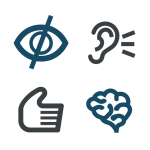
LTC: Accessible Small and Rural Communities
LTC: Accessible Small and Rural Communities will offer more than $7 million in grants to better serve people with disabilities.

Facilitation Skills Guide
Learn basic facilitation skills with ALA's free guide, "Leading Conversations in Small and Rural Libraries."
- Skip to main content
- Keyboard shortcuts for audio player
Weekend Edition Sunday
- Latest Show
Sunday Puzzle
- Corrections
Listen to the lead story from this episode.
Politics chat: What it'll take to win 2024
by Ayesha Rascoe , Mara Liasson
Middle East
6 months of war: palestinians say the u.s. government lacks empathy for their plight.
by Ayesha Rascoe
Threats and vulnerabilities cast a shadow on NATO's 75th anniversary
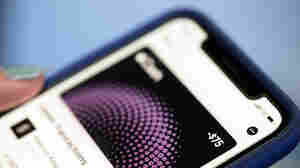
The Apple Pay app on an iPhone in New York. Consumers tend to spend about 10% more when they adopt mobile contactless payment methods, a researcher says. Jenny Kane/AP hide caption
Using your phone to pay is convenient, but it can also mean you spend more
by Matthew Schuerman , Ayesha Rascoe
Those in the path of totality for the eclipse might have to watch out for traffic
by Geoff Brumfiel
Environment
A group of volunteers will shepherd lake michigan fish's journey upstream.

Sunday Puzzle NPR hide caption
Sunday Puzzle: Idioms for the eclipse
by Greg Pliska , Will Shortz
The Cherokee community in North Carolina celebrates a high school championship win
by Laura Hackett
Music Interviews
Matt lowell of lo moon on the group's new album and going back to high school, 6 months of war: israelis say netanyahu isn't doing enough to bring home the hostages, 6 months of war: anger grows even in arab countries having peace treaties with israel.
by Jane Arraf
White House economist on the latest jobs report and where we stand with inflation
There are people still aboard the ship that crashed into the baltimore bridge, nevada bans camping in public spaces in response to its homelessness crisis.
by Bert Johnson
Why some voters are convinced Biden won't really be on the ballot in November
by Tamara Keith
Kentucky's gambling addiction cases may be more than it can handle
by Jacob Munoz
Here's what NASA's looking for in the next generation of astronauts
Movie interviews, a new documentary follows hundreds of high school girls forming a mock government.
Searching for a song you heard between stories? We've retired music buttons on these pages. Learn more here.

IMAGES
VIDEO
COMMENTS
The NCCSTS Case Collection, created and curated by the National Center for Case Study Teaching in Science, on behalf of the University at Buffalo, contains over a thousand peer-reviewed case studies on a variety of topics in all areas of science. Cases (only) are freely accessible; subscription is required for access to teaching notes and ...
The National Library is building its National Collection, the Public Library opened its collection for lending books, audio visual like DVDs, Music CDs and Kits with free memberships. ... H., & Dudek, K. (2016). From the concept to results: A case study on the collection development for the ODC-Opening Day Collection at Qatar National Library ...
Case Study: National Library Board Singapore: Delivering Cost-Effective Service Excellence Through Innovation and People January 2022 DOI: 10.1142/9781944659806_0027
Apparently, there is a paradox that such a traditional form produces inventive solutions, and that is the case for the Qatar National Library. The building is 138 meters long, equivalent to the ...
The Qatar National Library, designed by OMA's co-founder Rem Koolhaas, is a unique cultural building, with its striking shape, unusual library interior planning, and bringing together the past and the future through materials. References: QNL,(2018). The Building. Doha, QA: Qatar National Library. QNL. About the Library/ Our Building. [online].
Once inside the library provides 31,000 square meters of usable space divided in the following categories: Library - 25,900m². Office - 3,000m². Exhibition - 1,500m². Restaurant/Bar - 600m². Total - 31,000m². From the center of the library you really feel like you can actually see it all.
Building Case Study: National Library of Singapore. Architectural Technology 3. 2020-2021 / Dr Gabriela Zapata-Lancaster. National Library of Singapore. Group no: 5 C1813712 C1917612 C1949285 ...
1-800-545-2433 ext. 5418. [email protected]. CHICAGO — One of the first books of its kind, " Public Libraries and their National Policies: International Case Studies ," by John Helling, offers an in-depth look at national public library policies at a time when public libraries are facing shrinking budgets and pressure to make ...
The National Library of Technology is the most important meeting and study space in the Prague-Dejvice, campus which provides study facilities for thousands of students as well as other users. ... J, Aletta F. A soundscape approach to exploring design strategies for acoustic comfort in modern public libraries: a case study of the library of ...
Edited by Clyde Freeman Herreid. Originally published in 2006 by NSTA Press; reprinted by the National Center for Case Study Teaching in Science (NCCSTS) in 2013. Collection of 40+ essays examining every aspect of the case study method and its use in the science classroom. The book is available for purchase through NSTA.
John Helling, Witney, UK, Chandos Publishing, 2012, , 172 pp, £47.50 (soft cover), ISBN 978-1-84334-679-1. Drawing on his knowledge and experience as a public librarian and his teaching and research of public-library management, John Helling examines the service models and practices of 12 countries from around the world to examine the barriers and benefits of the national and international ...
NIH Virtual Tour: National Library of Medicine. The National Library of Medicine (NLM) is the world's largest biomedical library and a national resource for health professionals, scientists, and the public. News Spotlight 2024 NLM/MLA Joseph Leiter Lecture Responsible AI in Healthcare: A Practical Approach.
Case Studies. In 2014 and 2015, 10 public libraries from across the country took part in an extensive, 18-month training to learn the Harwood Institute's Turning Outward approach and put it to use in their communities. Known as the Libraries Transforming Communities (LTC) Public Innovators Cohort, these libraries spent countless hours talking ...
Case Study: National Library Board Singapore: Delivering Cost-Effective Service Excellence Through Innovation and People. Chapter · August 2021. DOI: 10.1142/9781944659806_0027 CITATIONS. 0. READS. 67. 2 authors: Some o f the authors of this public ation are also w orking on these r elated projects:
Led by the National Library Board (NLB), the Singapore Memory Project (SMP) is a long-term national programme under the National Library of Singapore (NLS) to enable the cultural and intellectual ...
A Case Study about Qatar National Library, International Information & Library Review, DOI: 10.1080/10572317.2021.1898757 To link to this article: https://doi.or g/10.1080/10572317.2021.1898757
This article presents the case study of the acoustic properties of the National Library of Technology (NTK), built in 2009, visited by more than 2000 users daily. From the acoustic point of view, these are coupled spaces, with horizontally structured spaces, which allow for dividing the space into zones according to the function of use.
This study investigates RDM services using the National Institutes of Health (NIH) Library as a case study and provides practical considerations for libraries seeking to extend their RDM services. The NIH's RDM services were analyzed based on Online Computer Library Center (OCLC)'s RDM service categories and the data lifecycle. In the RDM ...
Library in the Earth / Hiroshi Nakamura & NAP JUANZONG Books & Cafe / CASE PAVILION The Reading Room / A N Design Studio L'échappée / Atelier WOA Weldon Library Revitalization / Perkins&Will ...
Your awareness is key to protecting our national security. Explore a growing repository of U.S. case studies. Learn about the crimes, the sentences, the impact, and the potential risk indicators that, if identified, could have mitigated harm. You may search these case studies by various criteria including gender, type of crime, and military ...
November 30, 2023 Erin Nevius Publications 0. ACRL announces the publication of Everyday Evidence-Based Practice in Academic Libraries: Case Studies and Reflections, edited by Claire Walker Wiley, Amanda B. Click, and Meggan Houlihan. This new book collects excellent, thorough examples of evidence-based practice across functional areas of ...
Location: Red Hook, N.Y. | Staff Size: 5.4 FTE | Service Area: 14,000 Ì Download PDF The Libraries Transforming Communities (LTC) team from Red Hook Public Library used their training to engage residents in their small town. They learned people were frustrated that problems in their community—even obvious ones—often went unaddressed. The only stoplight in town, which didn't work ...
The selected case study is Qatar National Library (QNL) metro station at the EC in Doha. The study examines the potential of QNL as a destination TOD to enhance the area's mission as a driver for a knowledge-based economy. The methodological approach is based on the analytical concepts obtained from the Integrated Modification Methodology as a ...
Question: Explain the logistics operating arrangement that is practised at the nationaland community library. Use the example from the case study and thereferenced article to justify your answer Explain the logistics operating arrangement that is practised at the national
In Library and Information Science, Altmetrics is one of the emerging metrics to capture the online attention of scholarly literature. The present paper is an attempt to do a correlation study of ...
The Apple Pay app on an iPhone in New York. Consumers tend to spend about 10% more when they adopt mobile contactless payment methods, a researcher says.